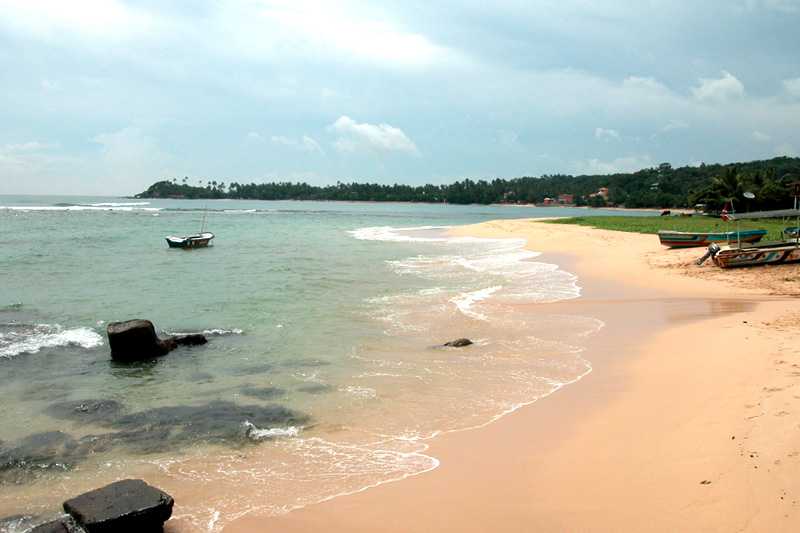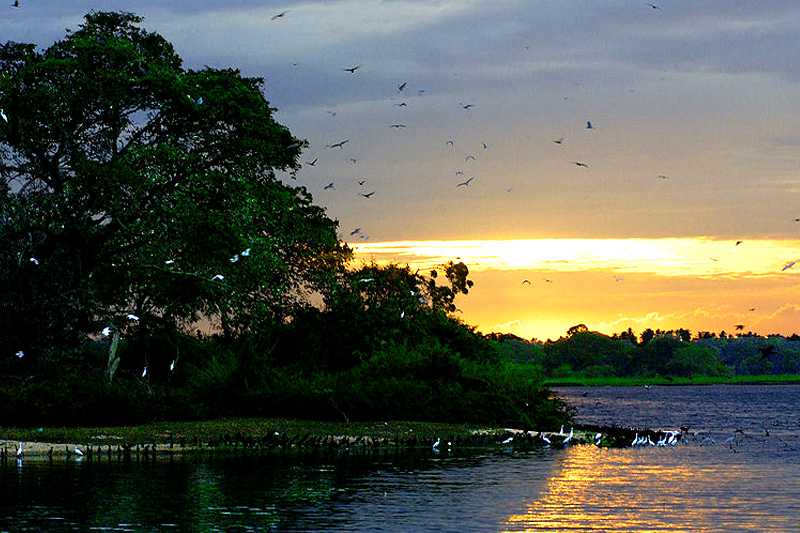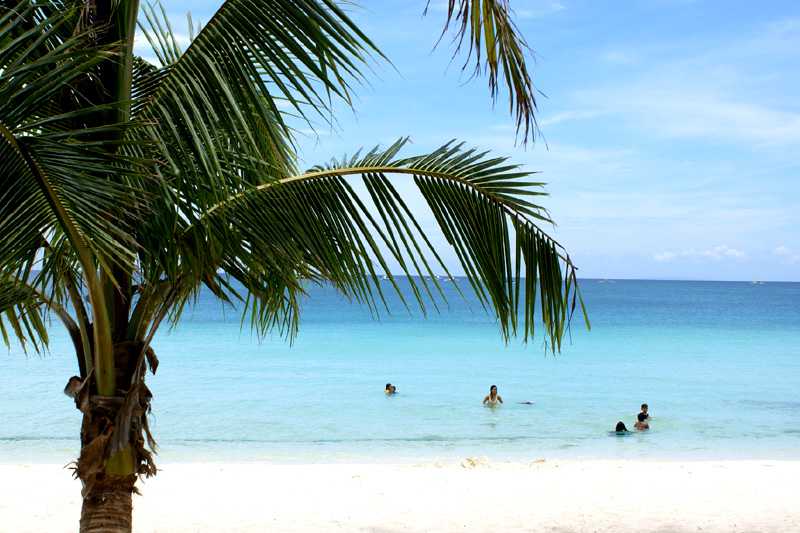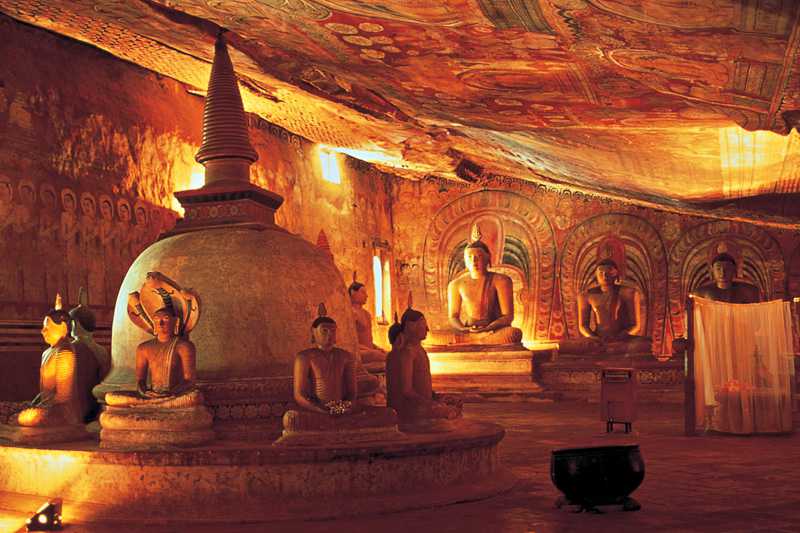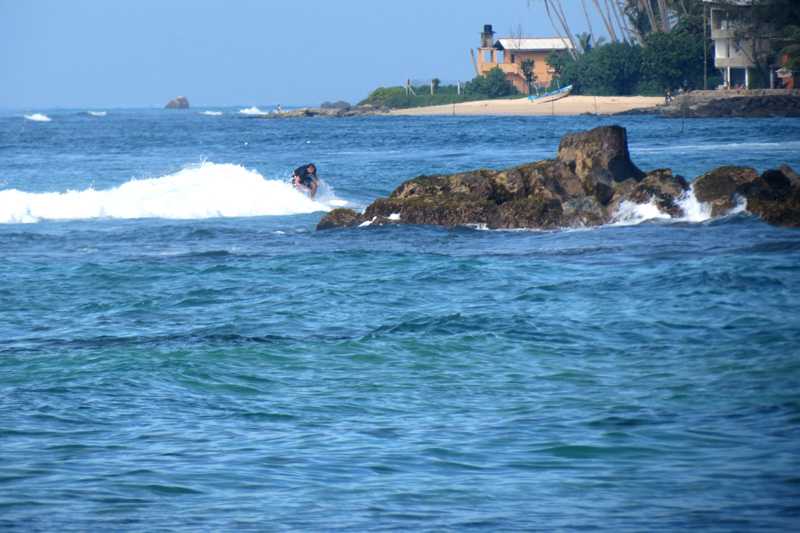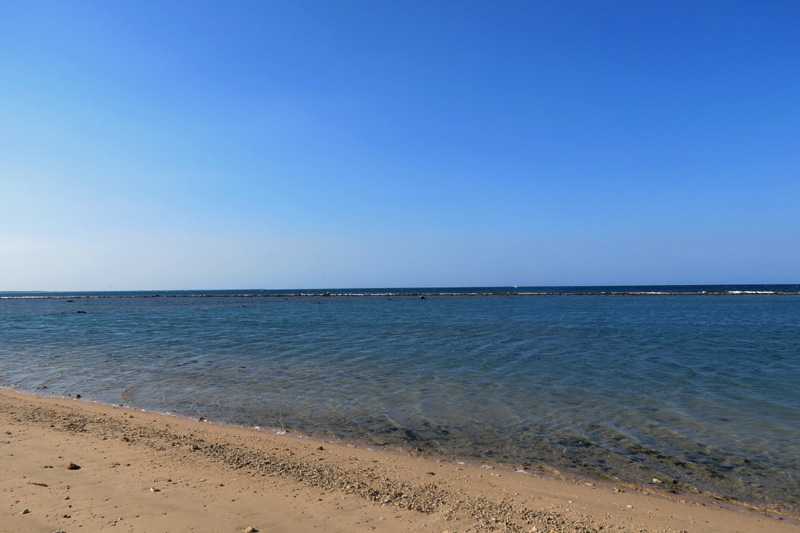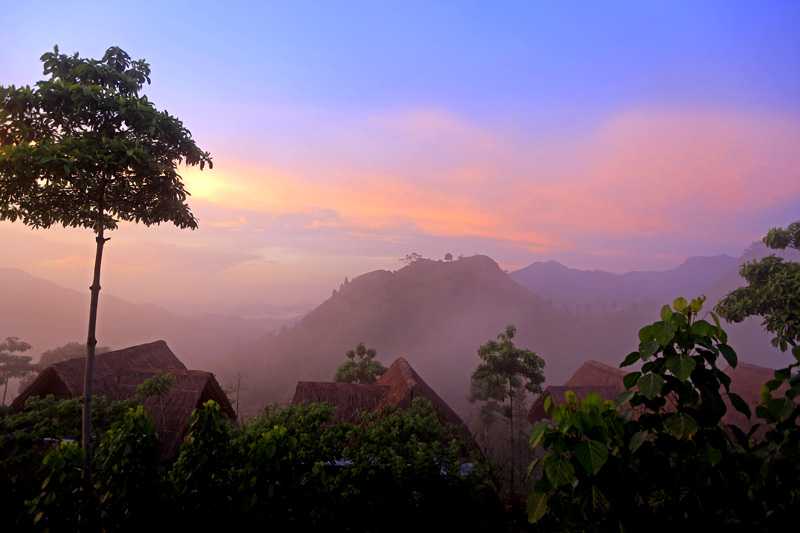Polonnaruwa City
Located 218 km north of Colombo, Polonnaruwa alias Pulastipura is an ancient city which was home to Sri Lanka's second kingdom. When the Anuradhapura Kingdom fell to the South Indian invaders in 993, the Sinhalese royal capital was relocated to Polonnaruwa as the second capital of Sri Lanka. Polonnaruwa was also the royal capital of the south Indian Chola dynasty but they were warded off in 1070 by King Vijayabhahu I and then he kept Polonnaruwa as his capital.
Polonnaruwa at a glance
Area: Approx 7,000 km2 Population: Approx 63,000 Distance: 218 km north of Colombo (3 1/2-hr drive) Province: North-central Province Climate: A tropical climate prevails throughout the year and the average temperature remains between 25oC and 32oC. April is the warmest with an average temperature of 29oC, which could get up to 34oC. January is the coldest when the average temperature is 25oC and it drops down to a minimum of 21oC.
However, Polonnaruwa had its brightest era during the reign of King Parakramahahu I (r 1153-86) who built colossal buildings, spectacular parks, huge reservoirs and tanks. The reign of King Parakramahahu I is considered a golden age during which trade and agriculture flourished. Parakrama Samudra, a colossal reservoir, is one of the greatest creations of King Parakramabahu I.
Polonnaruwa after its golden age faced many hardships and was conquered by the south Indian Tamils and Maghas in the 13th century. Then Polonnaruwa was abandoned and the Sinhalese kingdom was relocated to Yapahuwa in 1272 by King Bhuvanekabahu. Being an ancient kingdom under great kings like Parakramabahu I, Polonnaruwa stands as one of the greatest historical and archaeological sites in Sri Lanka and has been declared a World Heritage Site by UNESCO. Visit historical Polonnaruwa and catch a glimpse of Sri Lanka's glorious history.
Attractions in and around Polonnaruwa
Archaeological Museum
The archaeological museum in Polonnaruwa displays an array of artifacts discovered in archaeological excavations in and around the ancient city of Polonnaruwa and various other exhibits. A striking collection of bronzes is also on display.
Parakrama Samudra
Parakrama Samudra is a colossal reservoir lying over 5000 acres of land built by King Parakramabahu I in the 12th century. Parakrama Samudra which means 'sea of Parakrama' has been built combining several tanks such as Topa Wewa, Eramudu Wewa, and Dumbutula Wewa. The dam of the reservoir runs 14 km long while standing 40 feet high. Over 20,000 acres of paddy fields are irrigated by this huge ancient reservoir.
Royal Palace
The royal palace of King Parakramabahu I who was the greatest king of the Polonnaruwa period, is a magnificent construction lying in the centre of the royal palace complex. Measuring 31m x 13m, the palace known as Vijayanta Prasada once had seven stories, four upper floors of which were wooden. Only the 3-metre thick huge walls up to 3 floors of the palace can be seen today. These brick walls have large holes which may have held huge wooden beams of the structures of the upper floors.
According to Mahavamsa, the great chronicle, this majestic palace had 1000 chambers. Around the palace, ruins of a number of structures including the audience hall and Kumara Pokuna can be seen. It is said that this palace was set fire by the south Indian invaders once they conquered Polonnaruwa.
Audience Hall
The audience hall is a fine attraction within the royal palace premises of King Parakramabahu I. Entrance to the audience hall is through stone steps atop which two sculptured lions stay seated. Its frieze of elephants is also eye-catching. A number of stone pillars stand on the hall encircling it.
Kumara Pokuna
Lying in the southeast corner of the royal palace grounds near the audience hall, Kumara Pokuna is a bathing pond made out of smoothed stone slabs. This stone pond with was built in the 12th century to be used by royals. Water to the pond is supplied through an underground stone pipeline and water flows into the pond through two crocodile mouth sprouts. Nearby lie ruins of a changing room.
Vatadage
Located in the southeast of the Quadrangle or Dalada Maluwa (a rectangular walled enclosure built on a raised terrace that accommodates a number of ancient structures and monuments like Vatadage, Atadage, Nissanka Latha Mandapaya, etc.), Vatadage is a circular structure erected during the Polonnaruwa period to house the tooth relic of Buddha. Decorated with elaborate stone carvings, this magnificent structure lies on a raised platform and has two terraces: outermost and innermost. The outermost terrace is entered through a single entrance facing the north. This entrance is made of elegantly carved stone steps and enriched with a moonstone and two guardstones but only one guardstone remains today while the innermost terrace which is surrounded by a brick wall is entered through four entrances at the cardinal points. These entrances are also made of beautifully carved stone steps and flanked by guardstones and led by moonstones, northern one of which stands unique. Four 5-foot tall seated images of Buddha depicting the Dhyana Mudra carved out of solid stone lie facing each of these entrances. In the centre is a small dagoba in which relics of Buddha may have been enshrined. Three concentric rows of stone columns are positioned in the terraces; probably they were to support a wooden roof.

However, there is no evidence to the fact that who built this magnificent structure. However, it can be supposed that this has been built either by King Parakramabahu or King Nissanka Malla. The Vatadage in Polonnaruwa is a classic example for architectural expertise of the Polonnaruwa Era.
Moonstone at Vatadage
Moonstones or Sandakada Pahana of the Polonnaruwa period differ largely from those of the Anuradhapura period. The moonstone lying at the northern entrance of the Polonnaruwa Vatadage is one of the greatest moonstones of the Polonnaruwa period. One salient feature of this moonstone is that elephants, lions, and horses are carved in separate bands whereas figures of elephants, lions, horses, and bulls are carved in a single band on those of Anuradhapura period. Figures of bull cannot be seen on the moonstones of the Polonnaruwa era and it is believed that this is because of the influence of Hinduism; Polonnaruwa was conquered by the south Indian invaders.

Thuparama Gedige
Gedige is a hollow structure with thick walls and gediges are found in historical sites in the island. Thuparama Gedige is one such fine structure made out of bricks lying at the southern end of the Quadrangle. The smallest gedige in Polonnaruwa, Thuparama Gedige which is thought to be built during the reign of King Parakramabahu I, remains well-preserved. In the Gedige are some Buddha images.
Gal Pota (Stone Book)
Gal Pota or stone book is a 26-foot long 4-foot wide stone slab lying close to Hetadage in the Quadrangle. This ancient stone book contains inscriptions that affirm it was a publication of King Nissanka Malla whose virtues as a king are inscribed on this colossal stone book. The inscription itself says that this 25-ton stone book brought from Mihintale which is 100 km away. This is the longest stone inscription of that kind in Sri Lanka.

Hetadage
Another magnificent construction erected during the Polonnaruwa period, Hetadage is a large building built by King Nissanka Malla to house the tooth relic of Buddha. This resembles Atadage but larger in size. It once had a wooden upper floor, stone steps to which can still be visible and also three standing Buddha images can be seen lying on the ground floor. It is said that this building was erected in 60 days as it name Hetadage means the house of 60 days. At the entrance to the Hetadage is moonstone which is different from the typical moonstones of the Polonnaruwa period as it contains a lion figure.

Nissanka Lata Mandapa
Built by King Nissanka Malla and named after him, Nissanka Lata Mandapa is a unique structure located close to the western entrance of the Dalada Maligawa. This stone Mandapa is like a platform which is enclosed by a latticed stone fence and in the centre is a bubble-shaped small stupa encircled by lotus-stalk-like stone columns tops of which are shaped like lotus buds. Entrance to the Mandapa is through a stone door. An inscription at the Mandapa affirms that King Nissanka Malla used to listen to Pirith (chanting of Buddhist scriptures).

Satmahal Prasada (Demala Maha Seya)
Located at the northeastern corner of the Quadrangle, Satmahal Prasada alias Demala Maha Seya is a 32-foot high square, pyramid-type edifice with seven diminishing storeys. It is believed that this ancient edifice that resembles the eighth-century Square Chedi at Lamphun, Thailand is a work of King Parakramabahu I, during whose reign Polonnaruwa saw its pinnacle of prosperity.
Pabalu Vehera
Pabalu Vehera is a dagoba of unusual shape made out of bricks believed to be built by King Parakramabahu I. It is also said that the dagoba was built by Rupavati, the wife of King Parakramabahu. The third largest dagoba in Polonnaruwa, Pabalu Vehera is surrounded by four image houses with sitting and standing images of Buddha sculptured in limestone.
Rankot Vehera
The largest dagoba in Polonnaruwa and the fourth largest in the island, Rankot Vehera is a 180-foot high colossal dagoba made out of bricks and modeled after Anuradhapura era dagobas like Ruwanweliseya Dagoba. Rankot Vehera, the girth of which measures 550 feet was built by King Nissanka Malla (1157-1196) and it belongs to a monastic complex known as Alahana Pirivena.

The dagoba is surrounded by four image houses and flower altars made out of bricks. An inscription on the stone seat in front of the dagoba affirms that King Nissanka Malla oversaw the construction of the Vehera.
Buddha Seema Prasada
Buddha Seema Prasada is an ancient monastic university extending over an area of about 80 hectares. It is the highest building in the group of Alahana Pirivena, a monastic complex built by King Parakramabahu. The Prasada features a raised platform with decorative pillars. It is said that King Parakramabahu built this Prasada in order to maintain rules and order of Buddhist monks, after he united all Buddhist monks of the country under one sect.
Lankatilaka
Lankatilaka is a gedige-type roofless hollow structure made of bricks. This 12th-century fantastic structure was built by King Parakramabahu I and later restored by King Vijayabahu IV. The structure has 55-foot tall walls with elaborate carvings and the entrance is flanked by two beautifully carved guardstones. Inside the structure is a colossal headless image of Buddha with a height of 41 feet.
Kiri Vihara
Built by Subhadra, the queen of King Parakramabahu I, Kiri Vihara is an 80ft tall large dagoba which was originally known as Rupavati Dagoba. Kiri Vihara means milk white dagoba and it still remains in good condition without any restoration though it was built in the 12th century.
Gal Vihara
The most visited and celebrated attraction in Polonnaruwa, Gal Vihara, originally known as Uttararama, is an ancient rock temple in Polonnaruwa with a group of magnificent Buddha images, all carved into a single long granite rock. The group consists of four colossal Buddha images; two seated, one standing and another reclining. Erected by King Parakramabahu I in the 12th century, these colossal Buddha images portray the best of the Sinhalese expertise in rock carving.
The 7-metre-tall standing Buddha image is the finest of the four Buddha images. This image poses a sorrowful facial expression and arms folded across the chest and therefore some archaeologists say that it is of Ananda Thera, the disciple of Buddha, who is grieving for the Parinirvana (passing-way) of Buddha while some other archaeologists suggest that it is of Buddha who is showing his supreme compassion towards the suffering.
Lying on a leveled bare rock next to the standing image, the reclining Buddha image is a 14.12-metre long image carved into the solid rock and the largest in Gal Vihara. The image depicts the Parinirvana (passing-away) of Buddha who is lying on his right hand side with the right arm supporting the head on a bolster while the left arm lies along the body.
4.6-metre-tall seated image is the largest of the two seated images. The image poses the Dhyana Mudra (the meditation posture) and Buddha is seated on a lotus. The background rock is nicely decorated with carvings. Another seated Buddha image is smaller than the other and stands 15 feet tall lying in a cavern.
Nelum Pokuna (Lotus Pond)
Located about 500 metres north of the Demala Maha Seya, Nelum Pokuna or Lotus Pond is a lotus-shaped pond with five concentric, descending rings of eight petals each built by King Parakramabahu I to be used by monks.
Tivanka Image House
Built by King Parakramabahu I, Tivanka Image House is a fascinating image house lying 400 metres north of the famous Lotus Pond. The word Tivanka refers to three curves and the image house is so called as the only image of Buddha in the image house has three curves at knees, waist and shoulders. This Buddha image stands eight metres high and is headless being ruined.
With 7 - 12ft thick walls, the image house is 133ft long and 67.6ft wide. Tivanka Image House represents ancient classical art and delightful sculpture of the Polonnaruwa era. Both sides of the walls are exquisitely decorated; the outer walls are beautified with many decorative sculptures and paintings of happy-looking figures of ganas, dwarfs, etc., and inner walls are filled with unique murals depicting Buddha's previous lives. These murals show stylistic trends of the 12th and 13thcenturies. However, the murals at the entrance lack in detail and illustrational quality whereas the paintings on the inner walls seem to have been painted carefully.
Pulasti Statue
This is an 11-foot 2-inch high statue carved on a boulder during the Polonnaruwa period. This 12thcentury statue which lies close to the eastern bank of Parakrama Samudra and 100 metres north of the ancient Potgul Vihara depicts a majestic figure with a grave expression, holding a book-like object in his hands. There is no evidence to the fact that who built this statue and who appears in it. It is said that this statue is of King Parakramabahu I, the greatest king of the Polonnaruwa period while archaeologists suggest it is of Pulasti, a sage who was in Sri Lanka.
Potgul Vihara
Potgul Vihara is a thick-walled structure in the shape of a gedige built by King Parakramabahu I, near the Pulasti statue in the archaeological site of Polonnaruwa. It is essentially a Buddhist library complex considered to be the oldest library complex in Sri Lanka. This brick structure surrounded by four smaller dagobas at the four corners has four terraces. It is believed that the King used to listen to Jataka stories of Buddha related by a teacher at this Vihara.
Medirigiriya Vatadage
Lying in a beautiful surrounding in Medirigiriya, a town 31 km north of the Polonnaruwa city, Medirigiriya Vatadage is considered the best of Vatadages in Sri Lanka. A Vatadage is a unique circular structure built around a dagoba where sacred relics are enshrined.

This magnificent Vatadage has been built on a raised stone platform and the entrance is from north with three flights of steps. In the middle of the innermost terrace is a small dagoba while four seated Buddha statues with meditation posture lie facing cardinal directions of the four entrances. There are three concentric circles of 68 stone columns most of which still remain in original condition. The columns of the innermost circle stand 17 feet tall and of the other two circles, 16 and 9 feet. These stone columns that are topped with elaborate carvings and figures of dwarfs and lions have been built to support a roof which has disappeared now.
Somawathiya Temple & National Park
Somawathiya is a large dagoba built on the left bank of the Mahaweli River 40 km northeast of the ancient city of Polonnaruwa. Built by the Prince Abhaya to enshrine a tooth relic of Buddha that was possessed by Arhat Mahinda, Somawathiya is a popular tourist and pilgrimage attraction in the Polonnaruwa district. The dagoba has been named after Princess Somawathi who was sister of King Kavantissa and wife of Prince Abhaya.
Somawathiya is surrounded by the Somawathiya National Park, one of the four national parks designated under the Mahaweli River development project in 1986. The park is famous for elephants, herds of which can be seen wandering around the Somawathiya Dagoba. In addition, the park is home to a variety of mammalian species such as jackal, fishing cat and leopard, and avifauna.
Dimbulagala Vihara
Dimbulagala Vihara is an ancient cave temple located in a breathtaking hilly setting, 16 km southeast of Polonnaruwa, off the Polonnaruwa-Batticoloa Road. The temple consists of a number of rock caves, on drip edges of which Brahmi inscriptions appear. A dagoba lies atop a boulder and being on the rocky mountain one can see spectacular panoramic views of the area around. It is said that Prince Pandukabhaya who founded the Anuradhapura city making it the first capital of Sri Lanka in 380 BC, lived in a cave at Dimbulagala with Swarnapali for years.









